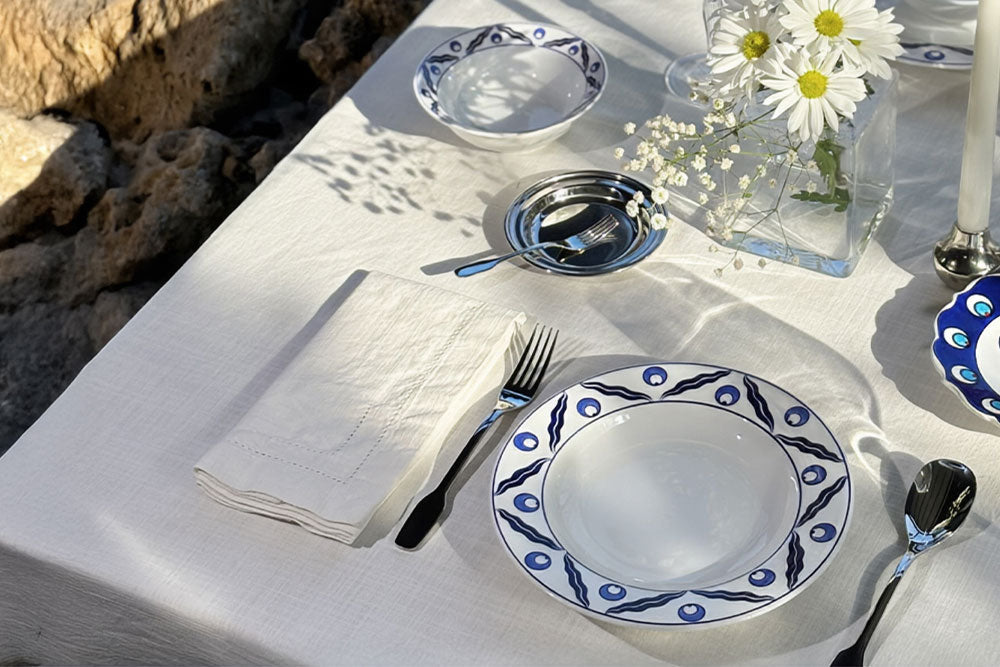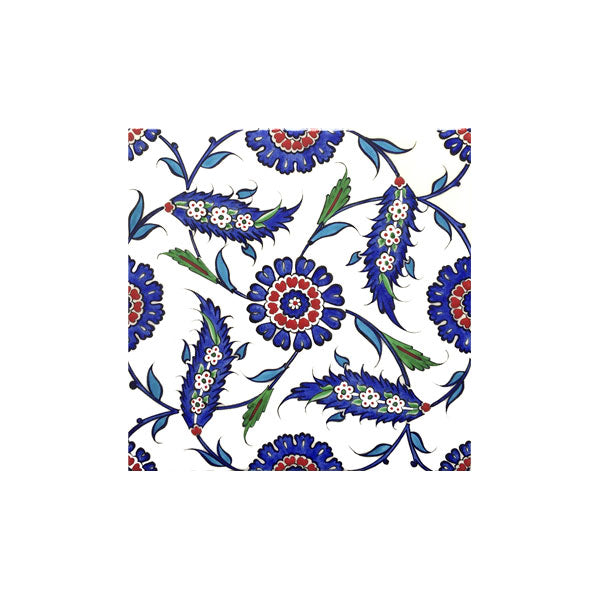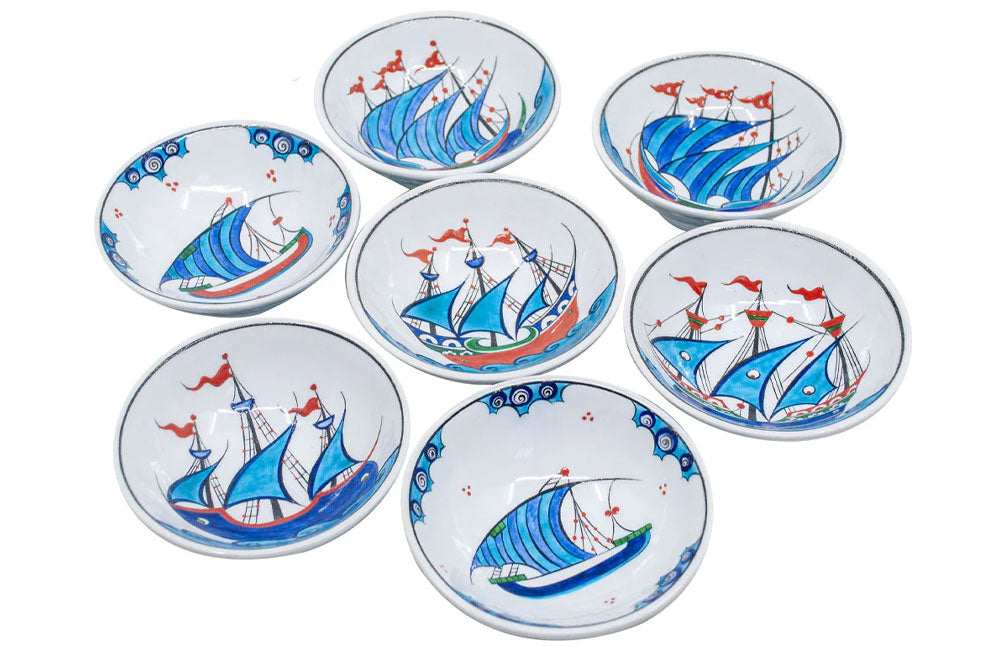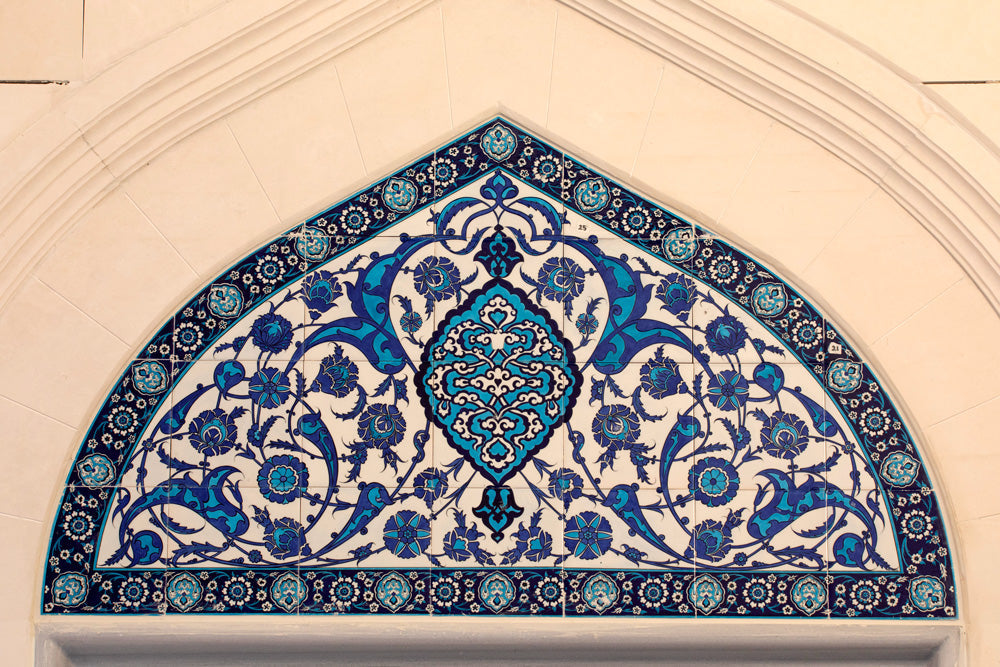Welcome to Iznik tile world
Welcome to Iznik tile world
Selimiye Mosque Tiles and Panels
December 26, 2018 4 min read

Edirne was the capital of the Ottoman State and the Selimiye Mosque was defined with the city. The mosque is the masterpiece of Mimar Sinan, the architect king of the Ottoman Court. Mimar Sinan lived in the early period of the Ottoman Empire and reflected the power of the empire with its architecture. It marked the peak of Ottoman architecture. The mosque is one of the most important buildings of Ottoman and world architecture. The status of the mosque is recognized by the world and the Selimiye Mosque and Social Complex are listed as a UNESCO World Heritage Site.

Gorgeous Selimiye Mosque laid the foundation stone in 1568 and has worked 1575't completed until about 15 thousand artists and craftsmen. Although it can be seen from the outside of the splendor, the real surprise is felt in the main hall of the mosque.
The main hall with its domed Selimiye Mosque represents the pinnacle of its architectural career. Despite the large diameter of the dome, the columns carrying the load were not allowed to divide the central area. According to historical records, during the march of the Ottoman campaign to European campaigns, six thousand people took part in the Salat ritual in the main hall of the mosque.

The four minarets of the mosque are located at the corners of the main hall and have three sherefes in each minaret. These minarets, although quite long, are very thin and this is an architectural wonder in itself, and their design is considered one of the most elegant of Islamic architecture. In two of these minarets, there are three inner staircases opening to different areas that do not intersect at any point.
Although Mimar Sinan described the mosque as a masterpiece of his architectural career, he established magnificent structures famous all over the world. The summary of his work, Tezkiret-ul Bunyan (Book of Works), stated that he passed the dome of the famous Hagia Sophia basilica in Istanbul with its dome of Selimiye Mosque and that the minarets were unique.

Mimar Sinan was famous for his modesty, genius, and mastery, so he reiterated the Selimiye Mosque, which he repeated in his words and referred to the mosque as alı his masterpiece h in a contemporary book; He used all the knowledge and skills he had accumulated throughout his long career.

Selimiye Mosque, as well as Iznik glazed wall tiles; decorations with geometric and herbal patterns painted by master artists; Carved and mother-of-pearl inlaid wooden fixtures, engraved marble mihrab, and pulpit are masterpieces with their own rights.
Dar al-Qurra Medrese, which is one of the social complex structures of the mosque, was transformed to serve as the Foundation Museum and the other building, Dar al-Hadith Madrasa, now hosts the Turkish and Islamic Art Museum.
Selimiye Mosque Iznik Tiles
Tile decorations of the structure have a special place in Ottoman and world art. These tiles, which are the best examples of the 17th-century tile, were made in the underglaze technique and in the workshops in İznik. The walls of the mihrab, the minbar, the wall of the mausoleum, the walls of Hünkar Mahfili, the walls of women, the corners of the arches, and the window pediments of the Qibla direction are decorated with tiles.

Large tile panels used on both sides of the mihrab wall are red, blue flower and leaf decorations, white on the top of the window, souvenirs written in the name of sülüs elhem, and a wide verse on the top. Hünkar is not as qualified as its tiles, but has a more artistic structure in terms of its arrangement and monumentalism.

An original coral red, which lasts only half a century, also joins colors in this period. In these tiles made with a high quality technique and elegant pattern understanding, tulip, hyacinth, carnation, rose and rosebud, various flowers such as irises and daffodils, grape bunches, spring open trees, cypress even apple trees, enriches compositions with a creative power.

After the second half of the 16th century all techniques are abandoned. It only started to use the so called underglaze techniques. In this technique, the tiles are first drawn with a primer, then the desired sample is drawn with outline lines and
the interior is painted to the desired colors. The prepared tile plate is immersed in the glaze and dried and then fed to the oven. Under the transparent glaze, which becomes a thin layer of glass in the oven, all colors appear brightly.

In addition, the fuzzy leaves in the form of dagger curved teeth and between them in various postures, bird figures, and sometimes also some legendary animals. There is no doubt in this enrichment that the creative power of the Nakkaş's belonging to the Ottoman palace has been influential.
Şahkulu and Karamemi (most exclusive artisan) have created various designs for the tile masters. The style of the Ottoman palace formed by this bushy source brought together a variety of art works and a style integrity in the art of tile.

Sultan Selim II, who made the mosque, ordered the presence of tiles up to the windows. While this is followed in the tile arrangement on the mihrab projection, it is seen that the Hünkar site was not applied in the tile arrangement.

These tiles, which were produced in the most brilliant years of Turkish Tile Art, are the only examples of today. This situation brought Selimiye to a very important place in terms of tile art besides its architectural success.Selimiye Mosque tiles have a very special place in Turkish Tile Art with its unique and Ottoman Architecture not found in other buildings.
An example from the selimiye mosque's magnificent Iznik tile panel made by Mehmet Gursoy and his team.
Also in News

Rediscovering Timeless Beauty: Handcrafted Iznik Ceramic Dinnerware for the Modern Table
April 08, 2025 2 min read

Thank you for being here!
Join us to discover the latest in Iznik tiles, enjoy special offers, and celebrate the beauty of Turkish artistry together.





